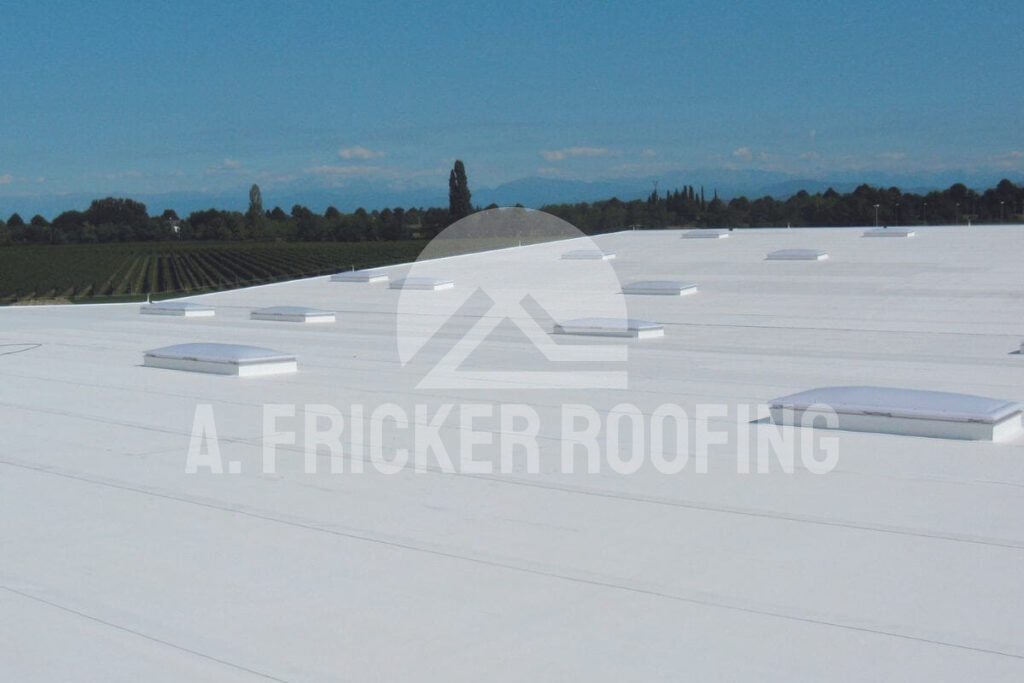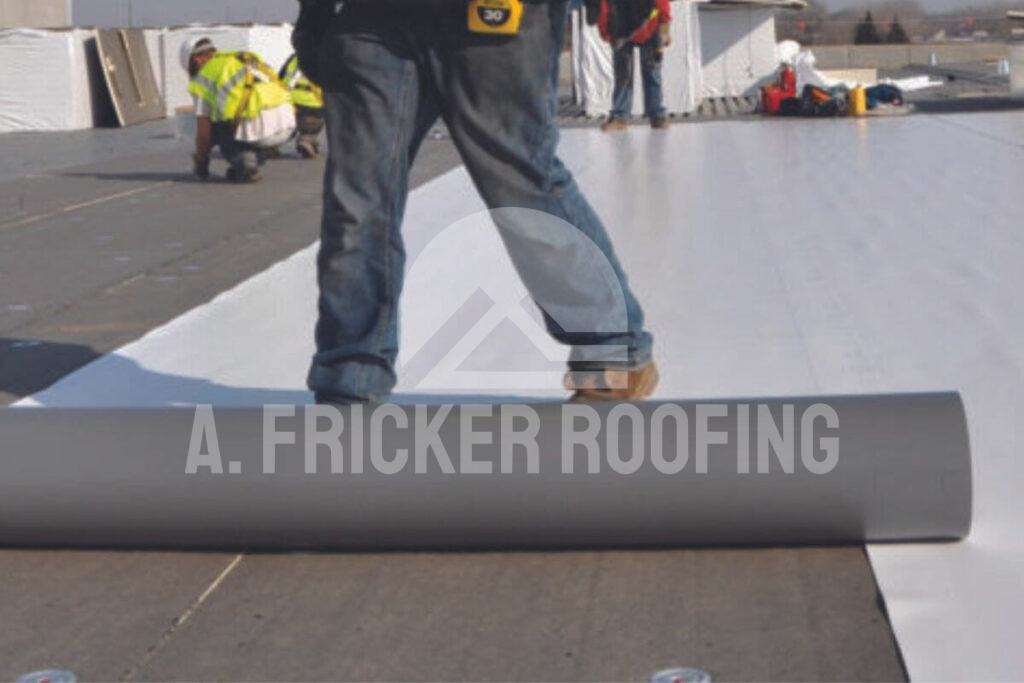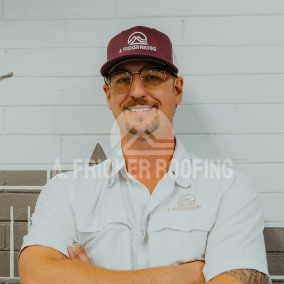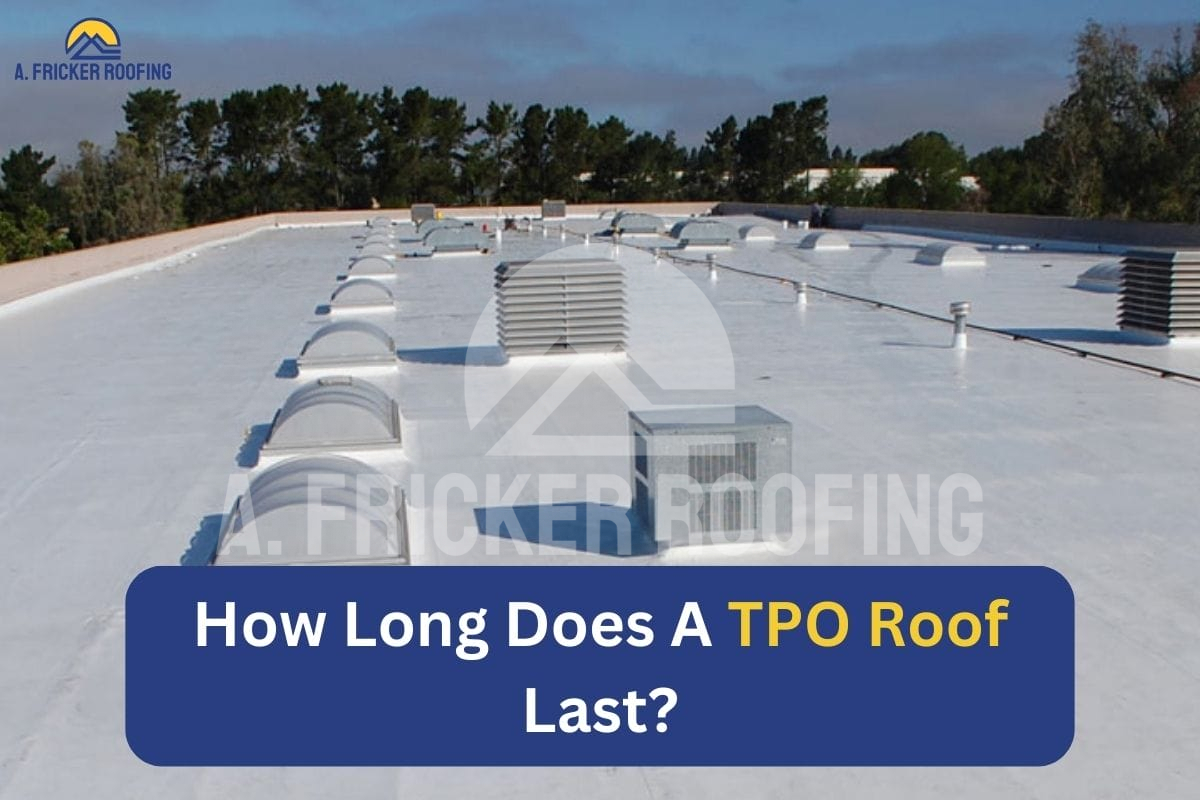
If you are going to install a new roof on your commercial property, ignoring TPO roofing problems can cost you in the long run. While TPO is one of the modern materials used for flat roofs to make them durable and weather resistant, it has some potential drawbacks too.
This thin material is often installed on commercial buildings and provides flexibility, protection from moisture, and moderate heat resistance; But longevity, blisters, and regular punctures are still a big concern to building owners. So, if you are considering a TPO roof, read on to know some of the most common challenges building owners face after installing the material.
Understanding TPO Roofing
TPO is a blend of two components: polypropylene (PP) and ethylene-propylene rubber (EP), which combine to form durable and flexible roofing material that is mainly installed on commercial buildings. While TPO is used for various purposes in many industries, it is primarily installed on flat roofs for its durability and moisture resistance.
TPO comes in white-colored sheets that can be installed on any roof, regardless of the size or complexity of the design. Protecting against UV radiation and moisture, TPO keeps roofs in top condition over a long period of time.
While there are many benefits to installing TPO membranes on flat roofs, commercial building owners face some problems that can’t be ignored. The following section provides insights into some common TPO roofing problems.
Looking for a flat roof contractor? Check Out: The 5 Best TPO Roofing Manufacturers To Consider For Your Next Project
5 TPO Roofing Problems That Challenge Building Owners

1. Punctures And Tears
As far as flat roofing materials are concerned, punctures and tears are common problems. Typically, the culprit is excessive foot traffic and the brunt of the weight. But the real question is, what makes TPO susceptible to wear and tear? Does the problem stem from its composition?
To a great extent, foot traffic and heavy loads are the issues, but the composition also contributes to uneven surfaces and abrupt punctures.
As said earlier, the TPO is a blend of two main elements, PP and EP. In addition to these elements, some fillers and additives are mixed to make the membrane more durable, flexible, and resistant to weathering. These additives include calcium carbonate, talc, clay, and silica. The uneven distribution of these fillers can create an inconsistent surface at the microscopic level, making the TPO membrane more susceptible to punctures.
2. Ponding Water – A Serious Issue
Ponding water is a serious problem for all roofs, regardless if they’re sloped, flat, rubber-based membranes, or metal. And the fact is, all the materials handle ponding water differently.
Ponding water is a real issue on TPO membranes if it persists for more than 48 hours, according to GAF. It can soften the roofing material, making it more vulnerable to leaks, mildew growth, and can compromise seam integrity. Since TPO roofs rely on seams that are heat welded or chemically bonded, they can become stressed when exposed to ponding water. Moreover, stagnant water on a roof can create a breeding ground for algae, mold, and other microorganisms.
3. Heat Resistance And Welding Issues
While TPO roofs are a good example of chemical and acid-resistant roofing, prolonged exposure to heat and high temperatures can break them down. This can be seen during installation, as TPO sheets are joined together at seams through heat welding. If the contractor increases the temperature and slows his speed, which is generally set around 12 feet per minute, there can be noticeable degradation of the roofing membrane. In addition, overheating can cause discoloration of the membrane.
Moreover, constant exposure to UV rays in consistently hot climates can cause TPO to undergo a process known as heat aging. Over time, this can result in reduced flexibility, increased brittleness, and decreased overall performance. TPO roofs also deal with thermal expansion and contraction stress along the seams and fasteners, causing water penetration through the gaps.
4. Seam Failure
Seam failure is a common TPO roofing problem. TPO roofs are sealed in two ways: heat welding and adhesive application. As discussed above, TPO roofs that are heat-welded can cause problems if it’s not handled properly by experts. Incorrect welding can lead to weak seams that are vulnerable to separation over time. Moreover, this can result in leaks and compromise the effectiveness of the roof.
Adhesive seams can fail when the bonding agents are low quality or the installation process is rushed. This can lead to peeling, separation, and water infiltration through compromised seams. Though TPO roofs are UV resistant, some of the adhesives used to join the membranes together aren’t. They can deteriorate over time due to consistent UV radiation and heat exposure.
5. Poor Installation And Workmanship
No doubt, every roofing material deserves and requires complete attention, proper installation, and quality workmanship. Similarly, TPO roofs should be installed by skilled roofers that are fluent in the process. Additionally, the quality of the material used, the warranty offered by the manufacturer, and adequate reinforcements, like flashing, should be considered before installation. All these separate parts come together to create a roofing system that is waterproof and long-lasting.
When roofing materials, such as TPO, are not installed correctly, it can lead to a cascade of problems that jeopardize the structural integrity of the entire building. Improper seam welding, inadequate flashing, and hasty application can result in vulnerable points where water can infiltrate, causing leaks and water damage.
Moreover, the consequences of poor workmanship often extend beyond immediate issues, as it can accelerate the deterioration of the roofing material due to stress and exposure.
If you’re struggling with TPO roofing problems, consider our list of the Top 6 TPO Roofing Companies In Tulsa For Your Commercial Roofing Project.
How To Solve TPO Roofing Problems

Now that you’re aware of the potential TPO roof pitfalls, let’s delve into effective solutions that can help you overcome these issues and enjoy the benefits of a TPO roofing system without stress.
1. Prioritize Quality Installation and Inspections
Avoid seam failures by ensuring impeccable installation. Choose certified and experienced roofing professionals who specialize in TPO roofs. Regularly inspect your roof for potential seam issues, especially after heavy rain or storms. Address any concerns promptly to prevent leaks and water infiltration.
2. Maintain Proper Drainage
Prevent ponding water by maintaining proper roof slopes and installing efficient drainage systems. Regularly clear debris from drains and gutters to ensure smooth water flow. If ponding persists, consult a roofing professional to assess your drainage setup and make necessary adjustments.
3. Minimize Vulnerabilities
Protect your TPO roof from punctures and tears by implementing preventive measures. Install designated walkways or paths to reduce foot traffic on the roof. Trim overhanging branches to prevent potential damage during storms. Regular visual inspections can also help you identify and address punctures before they escalate.
4. Apply Protective UV Coatings
Guard your TPO roof against UV degradation by applying UV protective coatings. These coatings act as a shield, preventing the sun’s rays from causing premature material deterioration. Regularly inspect the coatings and reapply as needed to maintain their effectiveness.
How To Solve TPO Roof Welding Issues
Properly addressing these issues requires attention to detail, skillful techniques, and the right tools. While you should always call a professional to remedy issues, let’s explore the steps they will take to solve welding problems on a TPO roof.
1. To address an incomplete job, they will carefully re-weld the affected area using the proper welding equipment and temperature settings. They ensure a thorough fusion of the TPO material.
2. Some of the major issues occur when the roofer’s speed and the temperatures used are inconsistent. This causes overheating of the membrane, causing burning and smoking. This can be prevented by carefully controlling the temperature during welding. Refer to manufacturer guidelines for recommended temperature ranges.
3. Overheating isn’t the only problem; Underheating can also cause issues. Combat underheating by increasing the welding temperature slightly within the recommended range. Ensure the TPO material softens and fuses adequately during welding. Adjust your welding technique to apply even heat and maintain consistent pressure to create a strong seam.
4. For misaligned seams, realign them carefully before re-welding. Use a straight edge or guide to ensure precise alignment. Re-weld the seam, ensuring the TPO material fuses evenly along the entire seam.
Conclusion
Your TPO roof, while resilient, faces its share of challenges. From heat woes to installation intricacies, each problem has its solution. By staying proactive, investing in its maintenance, and seeking professional guidance when needed, you can ensure that your TPO roof continues to protect your home for years to come.
Consider Professional And Skilled Roofers If You Want To Install A TPO Roof: Contact A. Fricker Roofing and Waterproofing!
Despite the problems they face, TPO roofs are one of the most preferred roofing systems for commercial buildings. Like every roofing material, TPO also has its own set of advantages, such as energy efficiency, affordability, and climate adaptability.
This roofing material can survive a mix of hot and cold temperatures without showing any signs of damage. TPO can be one of the best options if you are on a budget and want to cut down on your energy bills, but in order for this to happen you must have the proper installation completed.
Contact A. Fricker Roofing and Waterproofing today at (918) 402-7167 and consult one of our professional roofers about a TPO roof for your commercial building.



